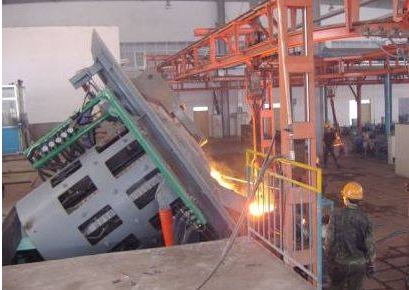- 05
- Sep
How much do you know about the three stages of the melting process of the iron melting furnace?
How much do you know about the three stages of the melting process of the iron melting furnace?
Today, let us understand the melting process of the iron melting furnace. The melting process of the iron melting furnace includes three stages: charge melting, composition homogenization, and molten iron overheating:
(1) The melting stage of the charge. The charge in the iron melting furnace first changes from a solid state to a soft plastic state. After the charge is added to the furnace, in order to protect the furnace lining, the furnace body first rotates intermittently and slowly in both directions. Under the action of mechanical force and heat, the large metal charge is gradually decomposed into small blocks. When the temperature in the furnace rises to the melting point of the metal, the one-way continuous rotation of the furnace body improves the heat transfer effect between the furnace body and the charge.
(2) The homogenization stage of ingredients. FeO and slagging materials (sand and limestone) formed in the melting stage first form slag, which covers and protects the molten metal. The charge changes from a plastic state to a liquid, the alloying elements begin to dissolve into the molten iron, and the carbon in the recarburizer begins to dissolve into the molten iron. At this stage, the furnace body continues to rotate in one direction, which promotes the homogenization of the composition of the molten iron, and the elements such as carbon, silicon, and manganese are quickly dissolved into the molten iron.
(3) Overheating stage of molten iron. The molten iron is overheated to the tapping temperature, and the carbon is completely dissolved in the molten iron. The slag and undissolved recarburizer cover the molten iron, which is overheated by the heat conducted by the furnace lining and reaches the tapping temperature.
The principle of molten iron overheating in the iron melting furnace is the same as that of other industrial furnaces. The top furnace lining has the highest temperature and the most heat accumulated in the furnace lining. When the furnace body is rotating, it continuously brings the heat accumulated in the top furnace lining into the molten iron to achieve the purpose of overheating the molten iron.

